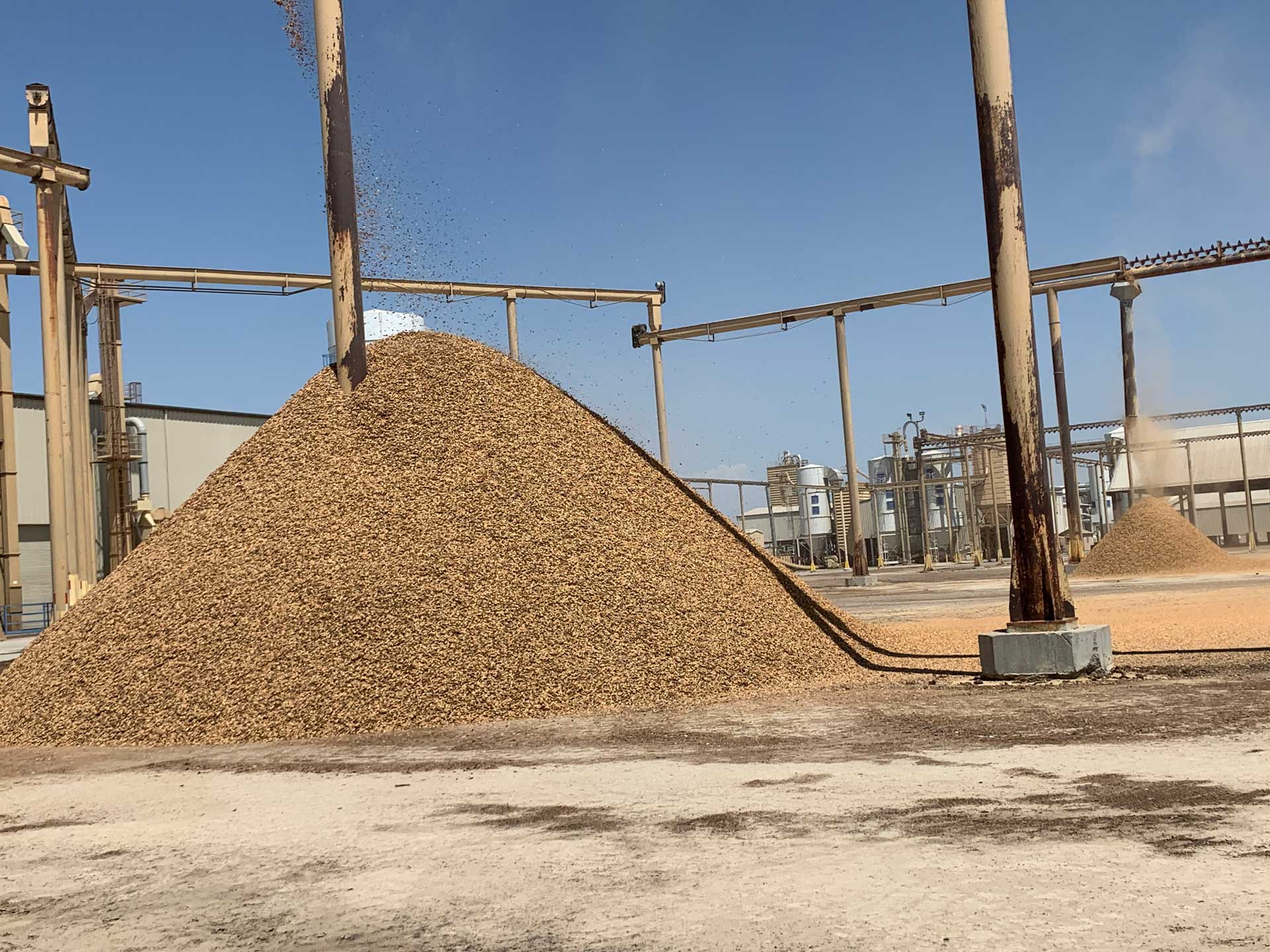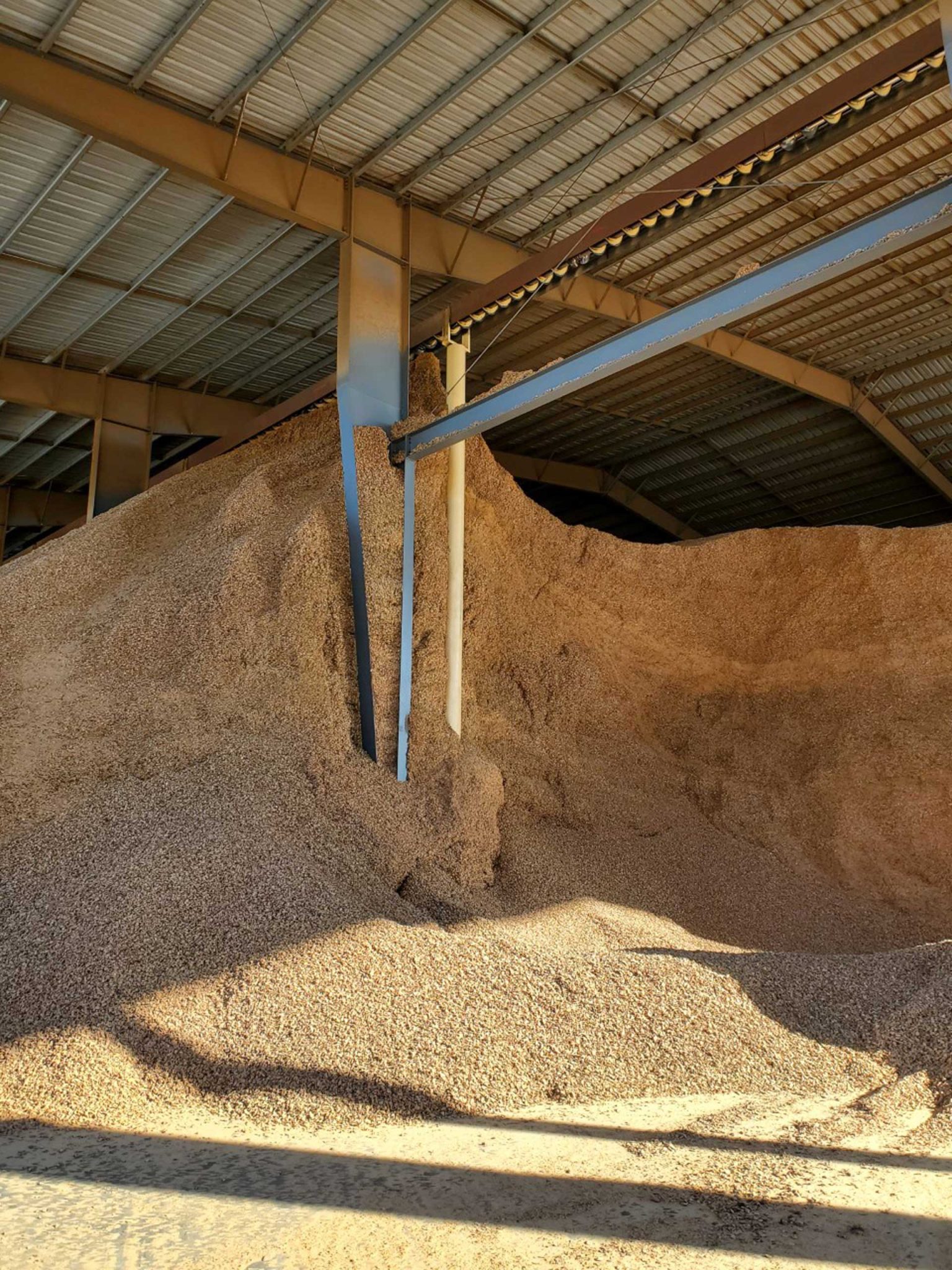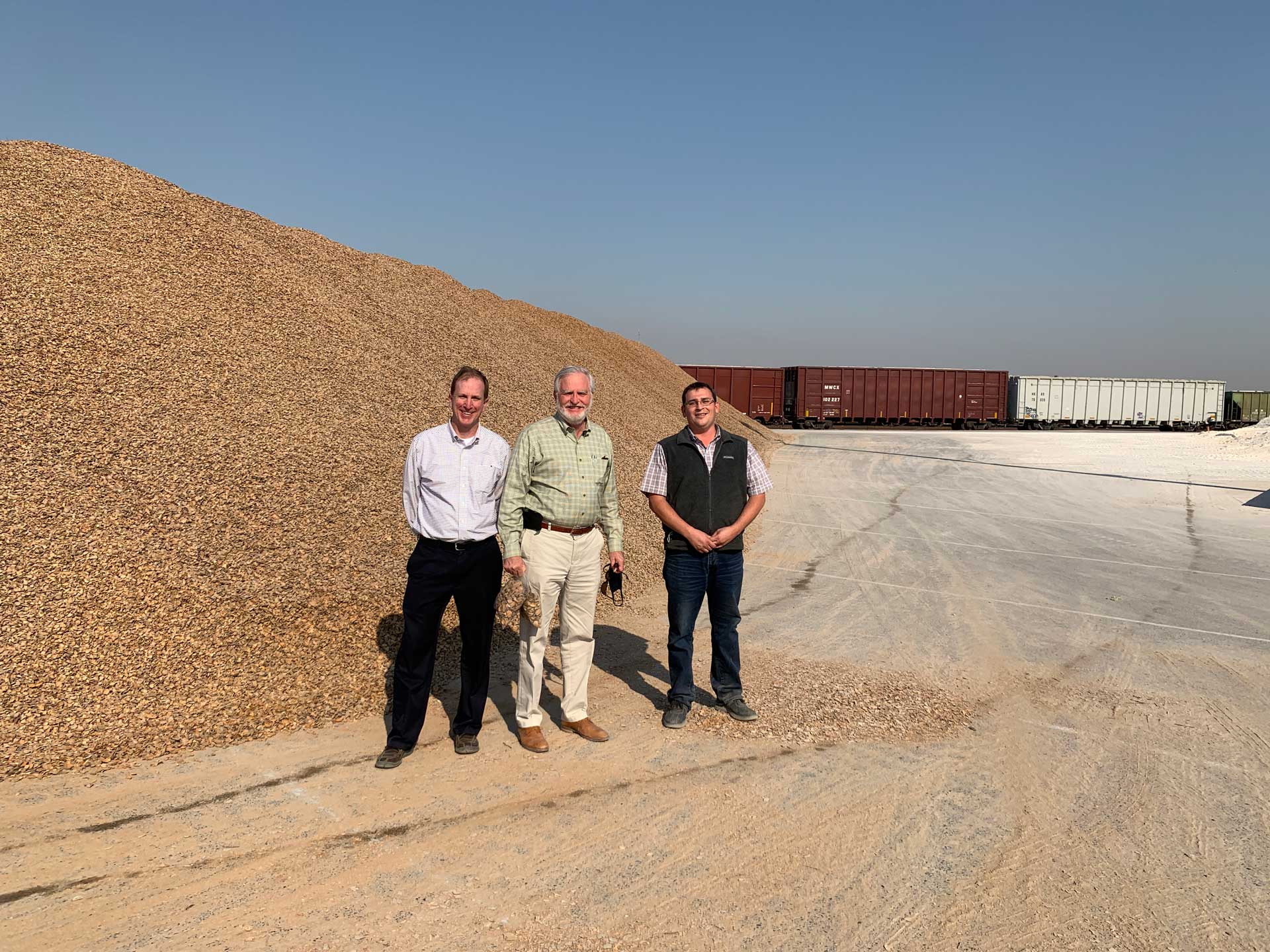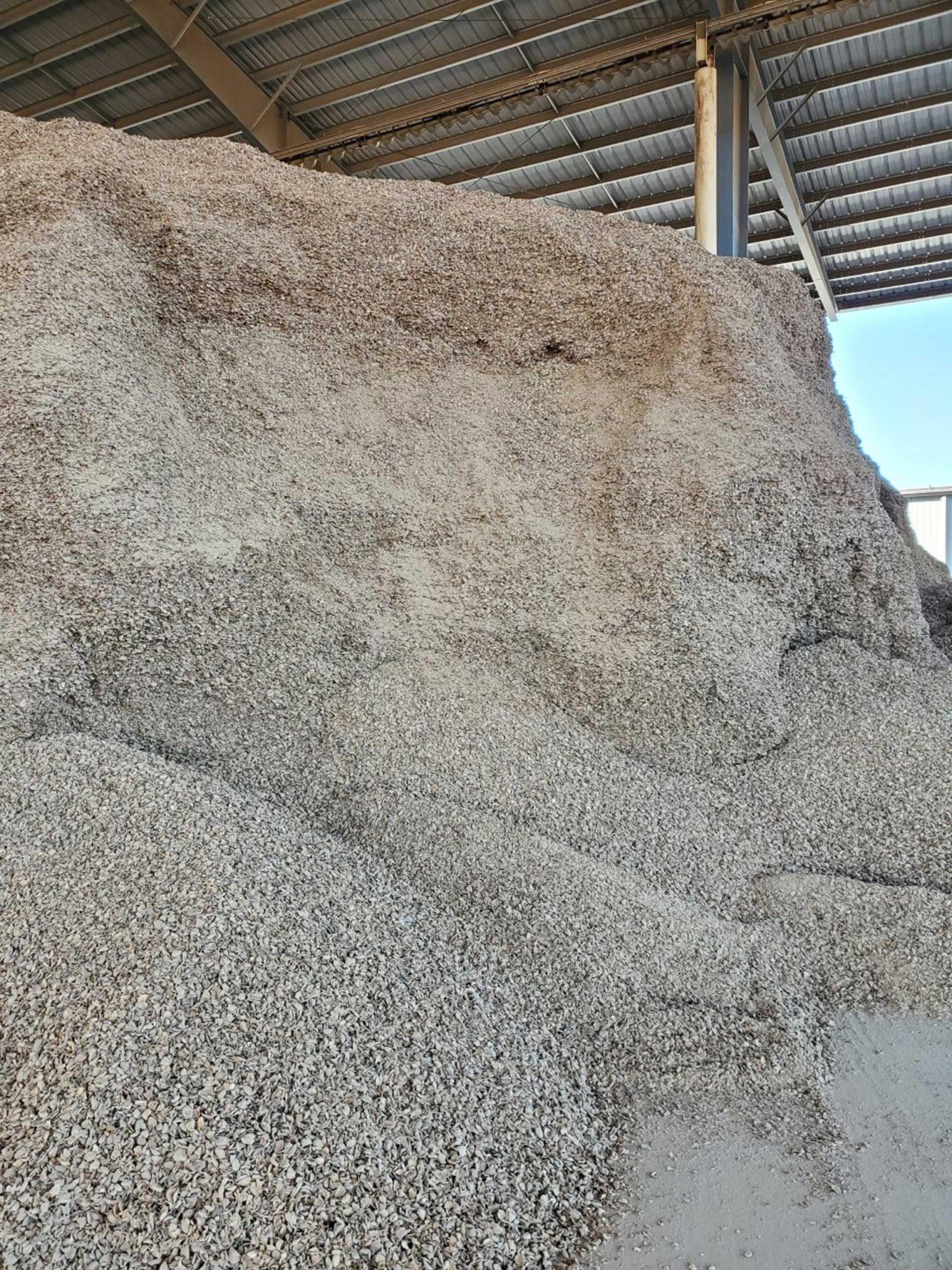
A shortage of fiber feedstuffs for dairy cow feed is driving higher prices for almond hulls.
The primary market for this byproduct of the almond industry has long been the daily ration consumed by dairy cows. Hulls provide dietary fiber and digestible carbohydrates. As hay and other fiber sources have become scarcer, demand for hulls has increased.
“Hullers and shellers are in an envious situation right now as the West is short on fiber,” Mike Kelley, president of Central California Almond Growers Association, said.
Production of alfalfa hay, silage and straw has decreased in California due to drought and changes in cropping decisions, leaving dairies to increase purchases of almond hulls for their dairy cow feed. Almond hulls are in ample supply in California, Kelley said, and the ‘lofty’ prices being received by hullers and shellers reflect demand by the state’s 1,600,000-plus dairy herd.
“Hulls are a real bright spot for the almond industry right now,” Kelley said. “We have started this season in a good place and have ample supplies of hulls.”
However, prices could reach the point where alternative fiber sources are sought, he added.

Hull Prices Reflect Demand
Fermentable fiber is already in short supply in California and Sustainable Groundwater Management Act regulations will make that shortage worse, predicted Peter Robinson, a dairy nutrition and management specialist for the University of California.
“Almond hulls will have a role here, but as with all feeds in the California dairy world, the price of the hulls, relative to competing feeds, will drive how much is fed. Supply of hulls will also drive the price,” Robinson said.
Prices for hulls have nearly doubled since 2020. That year, the average price per ton was $93. The average price topped out at $130 per ton last year, and Kelley said that the 2022 harvest would see hull prices in excess of the $170-per-ton range. The demand, he noted, fortunately comes at a time when dairies are receiving historically high prices for their milk products.
Hull Sales Reduce Fees
Dave Phippen, grower-sheller-processor and partner in Manteca-based Travaille and Phippen, said sales of hulls traditionally reduced the fees of the hulling and shelling process paid by almond growers.
“At a time when the prices for electricity, labor and transportation are on the rise, what a happy coincidence that so too has the value of hulls risen to deflect any potential increase in the hulling and shelling fees charged to growers,” Phippen said.
He added that at this same time, many of the huller and sheller facilities have ditched the traditional method of charging a hulling and shelling fee by the pound of shelled almonds emerging from the huller. Phippen said that many now charge growers by the incoming weight of loads from the orchards.
Hopefully, he said, this provides a sound reason for growers to do a better job of cleaning up loads by removing debris like sticks, stones and other foreign materials from field loads. Many growers now use conditioners on the windrows for this cleaning process. Phippen said that any effort on the part of almond growers to remove foreign debris from their loads has a directly positive correlation in lowering their cost for the hulling and shelling process. Traditional turnout ratios of the low 20th percentile are moving towards the high 20th percentile with this orchard cleaning effort by growers, he said.

Hull Standards
The California Department of Food and Agriculture has established a standard for what can be sold as almond hull feed, requiring it contains less than 15% crude fiber.
Kelley said hullers and shellers try to meet that standard, but that requires some blending. On average, soft-shell varieties have a range of 11% to 12% fiber while pollinator varieties can have 16% to 22% fiber.
“We watch closely to make sure we are meeting that 15% criteria,” Kelley said. Higher percentages of new soft-shell varieties, compared to hard and semisoft varieties of almonds, make that somewhat easier to create hull blends that are below the required 15% fiber.
Kelley noted that new hulling and shelling technology is also helping deliver a quality product to dairies as more shells can be removed in processing.
Robinson said that contamination and variability in hulls are two challenges for hull use by dairies. The less shell in the load, the more valuable the hulls are as part of the ration. Sourcing hulls from brokers and feed companies can create variation in hull quality at the dairy not from variance created on the processing side, but rather due to the differences in sources.

Alfalfa Alternative
Robinson said that dry almond hulls are delivered to dairies between 88% and 91% dry matter. In a total mixed ration, they absorb moisture, gaining 2% to 4% in weight. Hulls are classified as a moderate neutral detergent fiber with a low crude protein level and high soluble carbohydrate level. Overall, Robinson said, almond hulls as a dairy feed have a nutritional value equal to mid-grade alfalfa hay. Hulls can be included in dairy rations at levels as high as 20% of diet dry matter with little impact on milk production.
Alfalfa availability will be questionable in the future, Robinson predicted, due to its high water use relative to biomass produced.
Alfalfa production will decline as it creates far too little biomass for the amount of ET water used, Robinson said. Corn silage and winter cereal crops make better use of water, he added. Straw and other low-quality forages along with almond hulls will be used to fill the gap.
“Price of almond hulls will drive how much is fed going forward. Dairy farmers will use hulls (price allowing it as well as determining its feeding levels), and they will look for alternative forage sources. Nutritional consultants will really be challenged to make diet feed changes without reducing milk yield, which would be economically catastrophic to fiscal sustainability of farms.”

Cecilia Parsons
Cecilia Parsons has lived in the Central Valley community of Ducor since 1976, covering agriculture for numerous agricultural publications over the years. She has found and nurtured many wonderful and helpful contacts in the ag community, including the UCCE advisors, allowing for news coverage that focuses on the basics of food production.
She is always on the search for new ag topics that can help growers and processors in the San Joaquin Valley improve their bottom line.
In her free time, Cecilia rides her horse, Holly in ranch versatility shows and raises registered Shetland sheep which she exhibits at county and state fairs during the summer.















